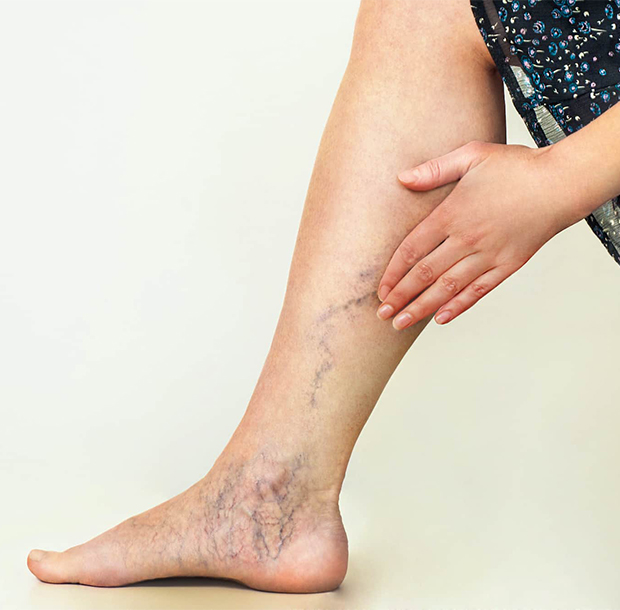Spider veins, medically known as telangiectasias, are small, dilated blood vessels that appear close to the surface of the skin. They often resemble a web or branching pattern, which is why they are commonly referred to as “spider veins.” Unlike varicose veins, which are larger and can cause significant discomfort, spider veins are usually smaller, less painful, and primarily a cosmetic concern. They most frequently appear on the legs and face but can develop anywhere on the body. While spider veins themselves are not typically dangerous, they can sometimes signal underlying circulatory issues that may require attention. Many people search online for reliable and affordable spider veins treatment in Islamabad to improve both health and appearance.

Causes of Spider Veins
Spider veins develop when tiny veins become enlarged and weakened. The veins in our body are responsible for returning blood back to the heart. They contain valves that ensure blood flows in one direction. When these valves weaken or fail, blood can pool in the veins, causing them to stretch and become visible under the skin. Several factors contribute to the development of spider veins:
- Genetics: A family history of vein problems is a significant risk factor. If a parent or close relative has spider veins or varicose veins, the likelihood of developing them increases. Genetics can influence vein structure, valve strength, and skin thickness, all of which play a role in vein visibility.
- Age: As people age, veins naturally lose elasticity, and the valves within them can weaken. This makes older adults more prone to developing spider veins compared to younger individuals.
- Hormonal Changes: Hormones have a profound effect on vein health. Fluctuations during puberty, pregnancy, menopause, or while using hormonal contraceptives can increase the likelihood of spider vein formation. Estrogen, in particular, can relax vein walls, making them more susceptible to enlargement.
- Pregnancy: Pregnancy increases blood volume, which can put additional pressure on veins. Hormonal changes during pregnancy also contribute to vein dilation. Many women develop spider veins during or after pregnancy, particularly on the legs.
- Prolonged Standing or Sitting: Occupations or lifestyles that require long periods of standing or sitting can cause blood to pool in the legs. This increased pressure in the veins can lead to the formation of spider veins over time.
- Obesity: Excess body weight puts additional pressure on veins, especially in the lower extremities. This added strain can weaken vein walls and valves, contributing to the development of spider veins.
- Sun Exposure: Ultraviolet (UV) rays can damage the skin and thin its surface layers, particularly on the face. This can make veins more visible, especially in fair-skinned individuals.
- Injury: Trauma to the skin, such as cuts, bruises, or surgery, can sometimes result in spider veins as a part of the healing process.
Symptoms of Spider Veins
While spider veins are often asymptomatic, meaning they don’t cause noticeable discomfort, some individuals may experience mild symptoms. The primary indication of spider veins is their appearance: small, red, blue, or purple lines visible just beneath the skin. These veins can form intricate patterns resembling a spider’s web, branching out from a central point. Common areas affected include the thighs, calves, ankles, and face.
Some individuals may notice additional symptoms, particularly when veins are under increased pressure:
- Aching or heaviness: Legs may feel tired or heavy, especially after prolonged standing or physical activity.
- Itching or burning sensation: The skin around affected veins may feel itchy, warm, or slightly irritated.
- Swelling: Mild swelling around the ankles or lower legs can sometimes accompany spider veins.
- Cramping: Some people experience muscle cramps or restless legs at night.
Although these symptoms are typically mild, severe discomfort or sudden changes in vein appearance may indicate an underlying vascular condition that requires medical evaluation.
Conclusion
Spider veins are a common vascular concern caused by weakened or damaged veins. They result from a combination of genetic, hormonal, environmental, and lifestyle factors. While they are generally harmless and primarily a cosmetic issue, they can sometimes cause discomfort or indicate more serious circulatory problems. Understanding the causes and recognizing the symptoms of spider veins is important for managing vein health effectively. Preventive measures, such as maintaining a healthy weight, exercising regularly, avoiding prolonged standing or sitting, and protecting the skin from excessive sun exposure, can help reduce the risk of spider veins. In cases where spider veins cause discomfort or cosmetic concern, various treatment options, such as sclerotherapy or laser therapy, are available to minimize their appearance and improve overall vascular health.




Comments